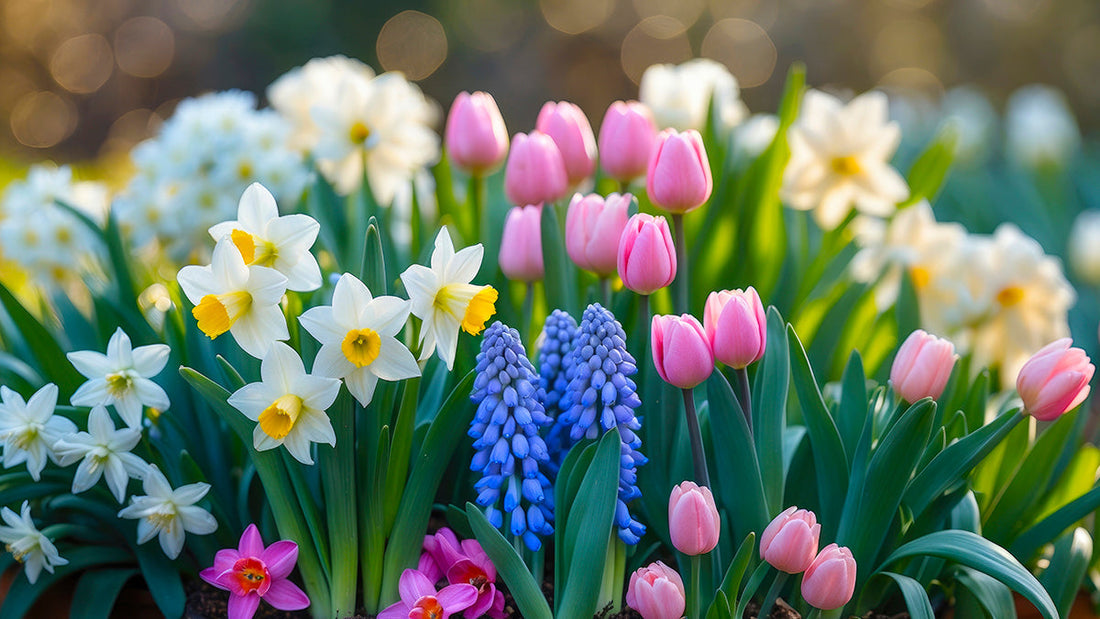
Plant Bulbs Now for a Spectacular Spring
Share
Your Guide to Spring-Flowering Bulbs
The air is getting crisp, the leaves are turning golden, and while your garden might be settling down for a long winter nap, now is the time to start planning for next Spring’s spectacular wake-up call!
Autumn is the ideal time for planting Spring-flowering bulbs like tulips, daffodils, crocuses and hyacinths. By investing a little time now, you ensure a vibrant, colourful, and fragrant display right when you need it most - after a long, grey winter.

Why Plant Bulbs in the Autumn?
Spring-flowering bulbs are what gardeners call 'hardy.' They need a period of cold dormancy (the winter chill) to trigger the chemical process that allows them to flower in the spring. Planting in autumn gives them plenty of time to:
- Develop Roots: They can establish a strong root system before the ground freezes solid.
- Get Chilled: They get the necessary cold exposure to ensure strong stems and large flowers.
- Be Ready: They'll be ready to emerge the moment the weather warms up!
When to Plant: The 'Sweet Spot'
The ideal time to plant is typically between September and November, or as soon as the weather begins to cool down consistently.
- Rule of Thumb: Plant when daytime temperatures are in the range of 50°F to 60°F
- A Special Case for Tulips: To help prevent fungal disease, it’s best to wait until a little later, often late October or November, when the soil is a bit cooler.
Step-by-Step Planting Guide
Planting bulbs is incredibly easy—you don't need a green thumb to succeed!
1. Choose Your Location
Most spring bulbs thrive in full sun or partial shade. Consider where the sun hits in your garden in early spring, remembering that deciduous trees won't have their leaves yet.
2. Prepare the Soil
Bulbs hate sitting in wet, soggy soil, which causes them to rot. Ensure your soil is well-draining. If you have heavy clay, mix in some compost or grit to improve drainage.
3. The Right Depth and Spacing
A good general guideline is to plant the bulb three times as deep as the bulb is tall.

4. Plant Pointy End Up
Bulbs have a slightly pointy end and a flatter, sometimes fuzzy, end. The pointy side faces up—that's where the stem will emerge. The flat side goes down to anchor the roots. Don't worry too much if you get one wrong; a determined bulb will usually find its way!
5. Water and Wait
After planting, give the area a thorough watering. This helps settle the soil and begins the root development process. Then, all that’s left to do is wait!
Go for the 'Wow' Factor: Planting Techniques
Don’t plant your bulbs in single, rigid rows. Use these techniques for a more natural, impactful look:
- The Drifting Effect: Scatter a handful of bulbs on the ground and plant them exactly where they land. This creates a natural, relaxed 'drift' of colour.
- Lawn Planting: Small bulbs like crocuses, snowdrops, and miniature daffodils can be planted in your lawn for a meadow look.
- Containers: Plant bulbs in pots near your front door or on your patio. Layer different types (Daffodils on the bottom, Tulips in the middle, Crocuses on top) for a long-lasting 'bulb lasagna' display!
Get Planting!
We’ve just received a fresh shipment of premium bulbs, including all the classics. Stop by one of our Garden Centres today, and let us help you select the perfect bulbs for your spring garden!
Happy planting!
